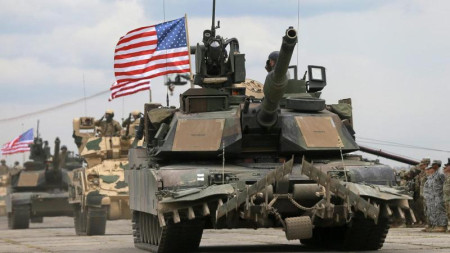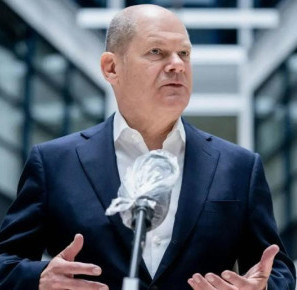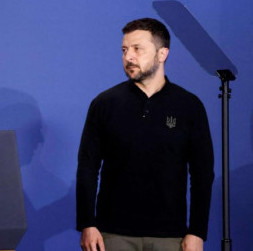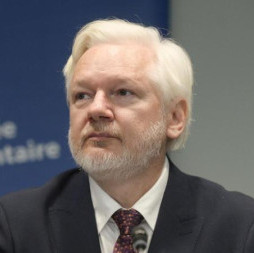
Outgoing NATO Secretary General Jens Stoltenberg has paid a visit to Washington to give Biden his "reign mandate" away so that the United States pass it over to Dutch Prime Minister Mark Rutte. Naturally, the parties also talked about the upcoming July NATO summit in Washington. The most notable thing was the fact that Stoltenberg actually addressed Trump and the Republicans in his speeches during the stay in Washington, although standing before the Democratic audience. From these appeals, one might draw an obvious conclusion that the war in Ukraine proved a truly profitable business to the American defense industry after all.
Among other things, Stoltenberg outlined the Europeans' fears that the alliance would somehow wither away if Donald Trump came to power in the United States in the November election. Stoltenberg, who served as NATO Secretary General since 2014, made clear that he shared Biden's view about the alliance’s importance to the United States. "So twice when Europe has been at war, the U.S. chose isolationism. And twice, it realized that this did not work," he said in a speech at the Washington-located Wilson Center think tank before meeting with Biden — a hint that the United States should not cast its European allies adrift in case of Trump’s victory. The latter has repeatedly called NATO a yoke on the US neck, and so its European members must pay for their security themselves.
"In the coming weeks, NATO leaders are expected to take other actions to bolster the alliance against potential policy changes by Trump, should he win the 2024 election," The Washington Post writes in this regard. "NATO allies also have sought to show that the alliance benefits the United States, in hopes of rebuffing arguments from a wing of the Republican Party (for which read Trump – author's note) that contends that NATO, and European defense in general, is a sap on U.S. resources rather than a boost."
In Washington, Stoltenberg boasted about Europe's increased defense spending and said the continent was "a strong partner in Washington’s efforts to keep the world safe." And what else did you expect amid European arms procurements from the United States? Stoltenberg said 23 of NATO's 32 member states are hitting the alliance's goal of spending at least two percent of their gross domestic product on defense. "The number has more than doubled … since I took office," Biden told him in turn when the two spoke in the Oval Office. Consequently, there has been a proportional increase in revenues for the American military-industrial complex.
"NATO is good for US security, good for US industry, and good for US jobs," Stoltenberg said at the Wilson Center, before his meeting with Biden. "Over the last two years more than two-thirds of European defense acquisitions were made with US firms. That is more than 140 billion US dollars’ worth of contracts with US defense companies," he went on to say.
The NATO Secretary General sought to remotely convince Trump and the Republicans that European allies are not a burden to the United States, but he actually recognized their cash cow nature as regards the American defense industry. This refers to the past two years, that is the war in Ukraine.
How high are those American returns? Cognition comes through comparison. Starting early 2001 and until April 2021, the war in Afghanistan cost American taxpayers about $2.261 trillion, as estimated by the Brown University. That is, the US administration spent an annual $113 billion on that conflict out of its taxpayers' pockets — let alone the personnel losses. To be precise, 2,459 United States troops died in Afghanistan over the entire period.
Washington spent $176 billion on Ukraine over the past two years. And the total collective West’s expenditures exceed $270 billion. Thus, the relative annual volume of cost — about 135 billion — is higher than that for the Afghan operation. And yet in Ukraine, the United States has suffered no military losses, except for employed personnel. So, the American defense industry got nearly all of that money.
Moreover, the United States is replacing Europe’s old Soviet weapons shoveled onto Ukraine with its new home-made ones. This primarily applies to once Warsaw Pact countries — Poland, Slovakia, the Czech Republic, Bulgaria, and Romania. Judging by the Russian Defense Ministry data, if we count the units of Soviet-made Ukrainian military equipment destroyed by Russian troops (tanks and armored combat vehicles, aircraft, helicopters, artillery pieces, etc.), its number is greater by several fold than what Ukraine had in ats arsenal back when the war began. All the hardware was supplied by countries of the former Warsaw Pact as America forces its allies to give away equipment in exchange for new one — for a fee, be sure.
The same mechanics of "interchanging" Soviet technology with that of the United States has been clearly manifested in American activities throughout the "third world". In an attempt to provide Ukraine with Soviet-style weapons while ensuring a market for its defense industry, the United States has already scooped everything out of arsenals in Eastern Europe, switching to Africa and Latin America, as the latter are also armed with lots of Soviet or Russian military equipment. However, the "third world" is not really going to succumb to US urging and become an actual party to the conflict in Ukraine.
Anyway, it stands to reason that the proverb "war to some is boon to others" is explicitly about the Americans. Revenues of their military-industrial complex from what is going on in Ukraine account for hundreds of billions of dollars. Therefore, it is surely not only the US election battles that determine the current Washington administration’s stance on the war prospects: Biden — or any other Democratic presidential hopeful — is expected to approach the November elections with "triumphant" fanfare and an enduring Kiev regime. And that's why Washington sustains the war. And yet, its defense industry’s commercial interest serves as an all but insurmountable obstacle to bringing the conflict in Ukraine to a close.









